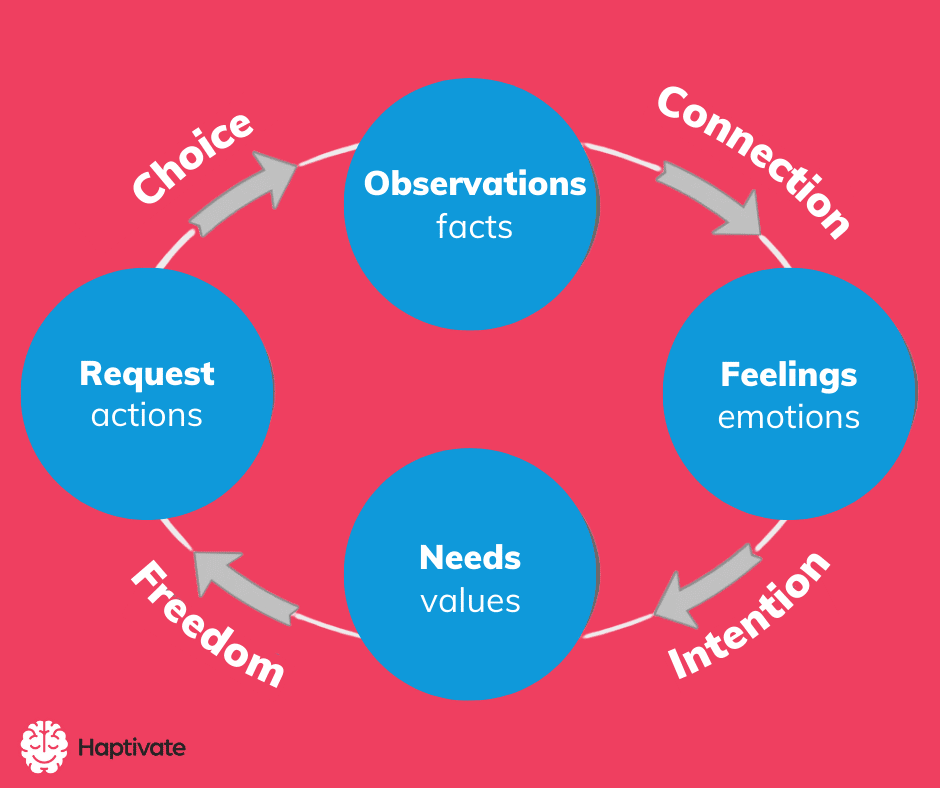From Tension to Teamwork: Resolving Conflict in the Workplace

Workplace conflict is an unavoidable part of any work environment. But that doesn’t mean it should be left unchecked or accepted as business as usual!
Unresolved conflicts can lead to decreased productivity, increased absenteeism, and have a negative impact on staff mental and physical health 1. But, with the right tools and strategies, we can resolve conflicts positively for everyone’s benefit.
In this blog, we’ll explore the causes of conflict in the workplace along with some useful tips and techniques on how to resolve it. By taking a proactive approach, we can create a healthier and more productive work environment for everyone.
Table of Contents
Workplace conflict: a common challenge
Whether it’s a disagreement with a coworker or a clash with your boss, dealing with conflict in the workplace can be a real challenge. And sometimes these situations are simply unavoidable.
People have different opinions and working styles, and sometimes those differences can be a source of tension.
A CIPD report found that just over a third (35%) of employees surveyed reported having experienced interpersonal conflict, whether an isolated conflict or an ongoing struggle. More worryingly, a massive 44% of those reported that the conflict was yet to be resolved 2.
Managing interpersonal conflict within teams is one of the biggest challenges for line managers. But the good news is, conflicts can be resolved. And with the right approach, they can even be prevented.
Get free access to wellbeing resources, news and research
Get access to the exclusive Haptivate Wellbeing Resource Hub and stay up to date with all the latest wellbeing at work research, tools and tips by joining our monthly newsletter. We promise not to share your data or spam you with irrelevant information 🙂
Recognising the signs of workplace conflict
Conflicts at work can take many forms.
Work issues, such as poor attendance or timekeeping, can cause conflict. Conflicts can also arise from disagreements between team members. This can range from personality clashes to more serious forms of unfair treatment, like bullying and harassment, which can occur across a wide spectrum of behaviour.
An obvious example would be a heated argument, while a less obvious example would be excluding someone from a work social event.
Obvious sources of workplace conflict include:
- Discrimination of any kind
- Harassment or bullying in any form
- Inappropriate behaviour
- Performance issues
- Personal attacks (jibing)
- Low-intensity deviant acts, such as rude verbal and non-verbal behaviours
- Poor attendance and time-keeping
- Unacceptable language
- Excessive personal use of the internet or email
- Theft
- Alcohol or substance abuse
Other, less obvious sources include:
- Uncivil behaviour, such as not replying to an email
- Different personalities or working styles
- Taking credit for other people’s work or ideas
- Not valuing other people’s views, backgrounds or experiences
- Talking over people in meetings
- Failing to include people in round-robin emails
- Ignoring people or being discourteous
- Cultural or diversity issues, such as misunderstandings or lack of sensitivity
Often, it’s more subtle behaviours that when left unaddressed lead to larger workplace disputes.

The real cost of conflict at work
A report by ACAS found that workplace conflict in the UK costs the economy a whopping £28.5 billion, each year which is over £1,000 per employee 3 Yikes!
The report also looked at how workers were affected and with 56% of people surveyed saying that conflict with other employees was causing stress, anxiety, or depression.
And conflict doesn’t just affect individual employees. It also takes a toll on the workplace itself, with results including loss of productivity, more sick days, and time spent on formal processes like mediation. And when things seriously escalate, the cost of ending employment can be huge.
In fact, the average cost of turnover per employee (earning £25,000 or more per year) is £30,614, according to Oxford Economics and Unum research 4.
That means replacing three employees on this wage in one year would cost your organisation close to £92,000. Big numbers, right?
The good news is that it’s comparatively cheap and easy to address conflict early on before it turns into bigger problems. For this reason, employers need to make sure their managers and employees are equipped with the skills to manage conflict and resolve it proactively.
Conquering challenging conversations
Navigating difficult conversations can be a challenge, but it’s a crucial part of being a manager.
To make these convos a little easier, it’s important to approach them with a clear and open mind.
Focus on listening to the other person, understanding their perspective, and being transparent about your own thoughts and feelings.
Try to keep the conversation positive and solution-focused, rather than getting caught up in blame or negativity. And remember, it’s okay to take a break if things get heated – you can always come back to the discussion when you’re both in a better place to talk it out.
Related Workshop: Resolving Conflict at work With Postive Communication
Interpersonal conflict is one of the biggest drains on team wellbeing and productivity, costing the UK economy billions in lost time every year. Discover practical, science-backed approaches to communicate with greater confidence, sensitivity and authenticity
Common communication challenges
- Not knowing how you feel or what you want
- Feeling intimidated or steam-rollered
- Playing the blame game
- Sending or receiving mixed signals
- Getting drawn into other people’s conflicts
- Nerves and struggling to find your voice
Mastering positive communication
Positive communication techniques refer to approaches that promote empathy, understanding, and collaboration in communication. These techniques are designed to foster healthy relationships and avoid conflict by encouraging open and respectful dialogue.
One such technique is the non-violent communication (NVC) model, which focuses on expressing your own needs and feelings while also considering and empathy for others.
This method encourages clear and direct communication while avoiding judgment, blame, or criticism. The goal is to build understanding and find mutually beneficial solutions to conflicts.

Applying the NVC model to real-life situations
Imagine this scenario…
Colleague A left you off a meeting invitation to discuss a project you’re currently working on.
As a result, you didn’t show up.
This prompted colleague B (who also attended the meeting) to question your absence. Afterwards they told you that you’d missed some important information relating to the project.
Here’s how you could approach the conversation with colleague A using the NVC model:
1. Observations: “I noticed you didn’t invite me to the project check-in meeting. Colleagues have been wondering why I didn’t show up and let me know I missed some important updates.”
2. Feelings: “I felt a bit blindsided and embarrassed, as I wasn’t even aware of the meeting. I’m also feeling a bit anxious, because I’m not up to date on where things stand with the project.”
3. Needs: “It’s important to me to feel included and in sync with the rest of the team.”
4. Requests: “Would you be willing to double-check future meeting invites to make sure I’m included?”
Need help mastering difficult conversations in the workplace?
Grab our Mastering Difficult Conversations – 4 Essential Shortcut Sheets, plus a ton of other useful resources by joining our monthly newsletter. We promise not to share your data or spam you with irrelevant information 🙂
Red flags: how to identify workplace conflict in your team
Sometimes, conflict is glaringly obvious. But, it’s not uncommon for people to hide disputes (particularly in the early stage).
It’s important for line managers to be aware of these signs and take action to address conflicts before they escalate and negatively impact the workplace.
Early intervention and resolution can help maintain a positive and productive work environment, support employee wellbeing, and ultimately benefit the organisation as a whole.
10 telltale signs of workplace conflict
- Decreased motivation and productivity or work quality
- Avoidance of interaction or communication with certain individuals or teams
- Increased absences or tardiness
- Increased conflict or arguments among team members
- Decreased morale or engagement in the workplace
- Poor collaboration or teamwork
- Decreased trust or respect among team members
- Heightened emotions or passive aggressive/ aggressive behaviour
- Gossip or rumours spreading among employees
- Increased complaints or grievances being raised

Informal conflict management as a manager
As a manager, dealing with conflicts between team members can be tough. It’s never easy to see people in your team not getting along. And it’s even harder to know how to step in and help fix the situation.
It’s a tricky balancing act, trying to be a neutral party while also trying to make sure that everyone is heard and respected. And it’s not just about the team members who are involved in the conflict, it can also affect the entire team’s productivity and morale.
Sometimes, team members may even start taking sides, creating a toxic working environment. It can also be difficult to know when to step in, or if it’s best to let the team members work things out on their own.
But, as a line manager, it’s essential to be proactive and take action when necessary to resolve conflict, so that the team can function smoothly and achieve common goals.
Before we get into how to manage and fix conflict, there are some steps you can take to help prevent it in the first place…
8 tips to help managers prevent conflict:
1. Get to know your team: Building and maintaining relationships with each team member requires getting to know them as individuals. Through it, you’ll foster good working relationships with them, understand personal pressures that may impact their work, and address any problems they may be facing with colleagues or their job.
2. Encourage open communication: Encourage team members to speak up and express their concerns and ideas. By creating an open and inclusive environment, staff will feel heard and valued, reducing the likelihood of conflict.
3. Define clear expectations: Clearly communicate job responsibilities, performance expectations, and policies to all employees. This will help reduce misunderstandings and confusion that can result in conflict.
4. Foster a positive culture: Encourage positivity and kindness in the workplace. Provide opportunities for team members to get to know each other and build relationships.
5. Address issues proactively: Address potential sources of conflict early on. If you notice tension between team members, have a private conversation with them to get to the root cause of the issue and find solutions.
6. Provide training and resources: Provide your team with training and resources on positive communication and resolving conflict. This will equip them with the skills needed to handle conflicts in a positive and productive way.
7. Don’t get involved in office politics or gossip: If you overhear gossiping, let them know that spreading rumours and talking behind others’ backs is not acceptable behaviour in the workplace. Encourage open and honest communication instead. By setting the right tone, you can help create a positive and productive work environment
8. Practice what you preach: Show your team how to handle conflicts and communicate in a professional and respectful manner. Encourage open and honest communication, listen actively and give feedback in a constructive way. By setting the tone, you can create a positive and productive work environment that’s free from gossip and negativity.
By following these tips, you can create a workplace culture where potential conflict is prevented before it gets out of control. When conflicts do arise, you and your team will be better equipped to handle them effectively and efficiently.

Addressing unacceptable behaviour
Despite your best efforts, conflict within your team can still arise. And it’s important to address unacceptable behaviour ASAP to maintain a positive and productive work environment.
Let’s say, for example, you witness a team member roll their eyes and say “whatever” after another team member suggests a particular course of action. Here’s how you could approach the situation:
1. Speak up: It’s important to acknowledge that what just happened isn’t OK – but also heed the mantra of praise in public but reprimand in private. So ask the individual to speak with you privately after the meeting.
“I’m noticing an issue here. This isn’t the right way to work together as a team so I’ll need to talk to you about this.”
2. Don’t rush to judgement: Remember that you probably don’t have all the facts and this is an opportunity for both parties to learn. So when you’re alone, lead with curiosity and give the team member an opportunity to share their perspective on the issue.
“Let’s talk about what happened earlier. I’m interested to know what prompted your reaction when we discussed that idea?”
3. Explain the behaviour that needs to change and its impact: Now you can contribute your perspective and let them know how their behaviour is affecting the team and the work environment. For example,
“Taking subtle jabs at each other brings down the mood and makes it hard for the team to work effectively towards its goals. If there’s a problem with a suggested course of action then let’s talk about that openly and respectfully so we can make sure we’re taking the best path forward.”
4. Emphasise company values: Remind the person of the company’s values and the expectations of behaviour in the workplace. For example,
“We’ve got to remember that one of our values is respect and we need to hold ourselves accountable to acting in line with this.”
5. Look for solutions and offer support: Once you’ve explained the change you’d like to see, you can ask what would help with that.
“Is there anything that could make this easier?”
6. Follow up: Check in down the line to check progress, create accountability and offer any necessary support to help ensure similar incidents are avoided in the future.
These steps offer a path to addressing unacceptable behaviour in a professional and effective way, helping to promote a positive and inclusive work environment for all team members.
Related Workshop: Resolving Conflict at work With Postive Communication
Interpersonal conflict is one of the biggest drains on team wellbeing and productivity, costing the UK economy billions in lost time every year. Discover practical, science-backed approaches to communicate with greater confidence, sensitivity and authenticity
Mediating conflict within your team:
If conflicts go unresolved, they can bring down the team’s morale, hinder productivity, and make the work environment unpleasant for everyone.
As the mediator, you can help your team understand each other better, find common ground, and come up with a solution that works for everyone.
By handling conflicts well, you can improve team dynamics, encourage teamwork, and create a positive work atmosphere.
Bottom line: resolving conflicts is important for having a happy and successful team.
1. Find a safe and private place for the parties involved to have a constructive conversation, making sure that everyone can talk openly and honestly without any distractions or interruptions.
2. The first step is to clarify the source of the conflict by understanding what’s causing the issue, whether it’s a disagreement about a project deadline, a personality clash, or something else entirely.
3. Listen carefully and try to understand each person’s perspective and where they are coming from. Make sure that everyone has a chance to express their thoughts and feelings clearly.
4. Investigate the situation by asking questions and gathering information to get a complete understanding of the situation. This can help identify the root cause of the conflict, which is often not what it appears to be on the surface.
5. Brainstorm and discuss solutions with the parties involved to find ways to meet the common goal of the team and find a compromise or a way to work together more effectively.
6. Agree on the course of action and determine the responsibilities of each team member.
7. Evaluate how things are going and decide on preventative strategies for the future to avoid similar conflicts in the future.

When all else fails: formal conflict resolution
Even when you’ve tried your best to put a conflict to rest, sometimes the issue just persists. In those cases, it might be time to take things up a gear and use formal procedures to address the situation.
But pause for a second as this isn’t something to jump into lightly.
Formal procedures should only be a last resort when informal methods haven’t worked. And if someone does make a serious complaint or wants it investigated, they have the right to file a grievance.
Significant incidents, like harassment or bullying, need to be taken seriously and handled promptly. And if someone’s conduct or performance is majorly impacting the workplace, it’s okay to use the formal disciplinary process.
If you feel like you’re lacking confidence or reaching the limit of your people management skills, don’t be afraid to seek support from Human Resources.
Sharpening your conflict management skills
Conflict at work is one of the many delightful parts of being a manager. But don’t worry, managing conflict is something you can learn, helping you to create a more harmonious work environment for everyone.
Having the skills to manage and resolve conflict is important for managers because it helps them handle disputes between team members, avoid and resolve conflicts, create a positive work environment, and improve productivity and morale.
When managers are equipped with these skills, they can quickly and effectively solve workplace issues, preventing them from escalating and causing further harm to the team and the company.
Ultimately this means less time wasted on drama and more time spent on actually getting work done! So, by developing their conflict resolution skills, managers can make their teams happier and more efficient.
Through our Positive Communications and Resolving Conflict at Work Workshop, we explore practical communication tools and techniques based on leading psychological research.
How to develop conflict management skills:
Educate yourself: Read books, attend workshops, or take online courses on conflict management. This will give you a better understanding of the different techniques and approaches to help you manage conflict.
Be proactive: Don’t wait for conflicts to arise before you start thinking about how you’ll handle them. Plan ahead by anticipating potential sources of conflict and developing strategies to prevent or manage them.
Listen closely: Practice active listening. Listen to both sides of the story. Make an effort to understand everyone’s perspective and avoid interrupting or talking over someone.
Practice empathy: Put yourself in the shoes of the other person to see things from their perspective. As a result, you will be able to develop solutions that everyone can agree on.
Stay impartial: Practicing equality is key to conflict management. Mediation between two or more team members requires a sense of impartiality and not showing any preference for one side or the other. Conflict and resentment will fester if you’re seen to take sides.
Find common ground: Look for areas of agreement between the parties. This will help you find a solution that works for everyone and build a better working relationship.
Stay calm: Conflicts can escalate quickly, especially when emotions are high. Keep your cool and avoid getting defensive or aggressive.
Get help: Don’t hesitate to bring in a neutral third party, such as other line managers, or a mediator, to help resolve the issue.

Final thoughts
In conclusion, resolving conflict in the workplace is essential for maintaining a healthy and productive work environment.
By understanding the sources of workplace conflict and implementing effective conflict management strategies, managers and employees can work together to find common ground and reach a mutually beneficial solution.
Investing in training and development in conflict resolution can also help equip individuals with the necessary skills and knowledge to proactively prevent conflicts from arising in the first place.
If you’d like some guidance around building conflict resolution skills and positive communication, the Haptivate team is always happy to help. You can drop us a line here or even book a free consultation here.
Need a Hand?
If you’re searching for a partner to help improve wellbeing and happiness in your workplace, get in touch with a friendly member of our team. We’re here to help you reach your goals.

Aysha Frost
Digital Marketing







